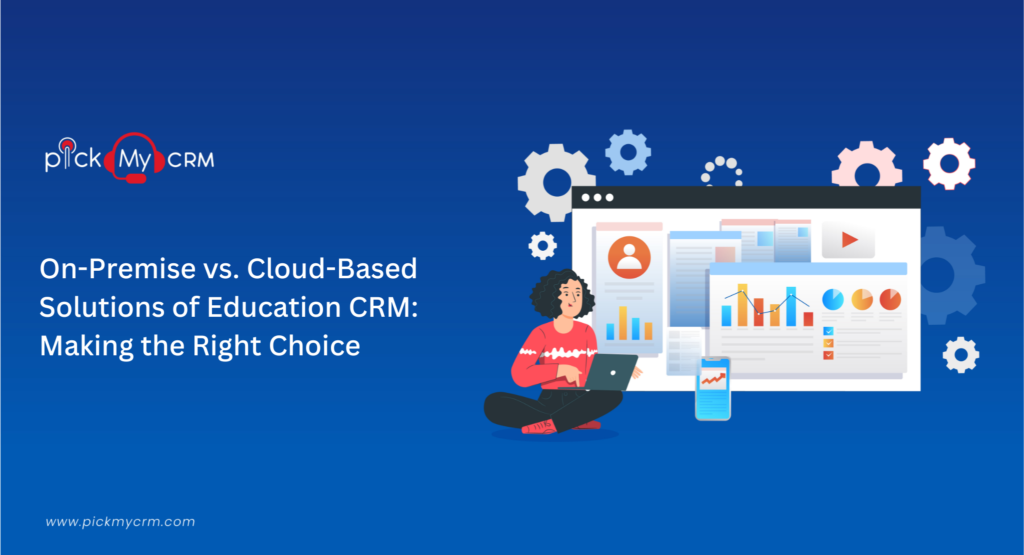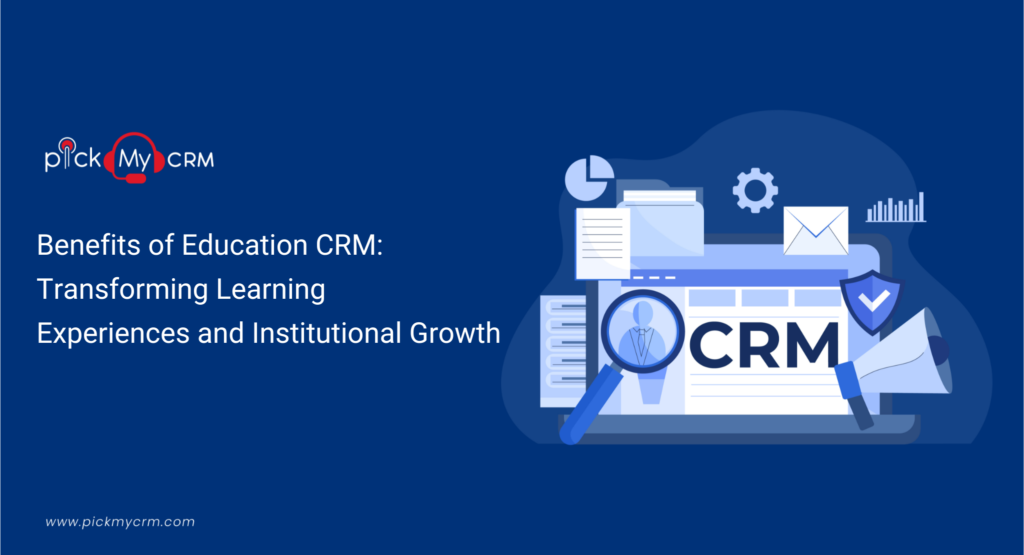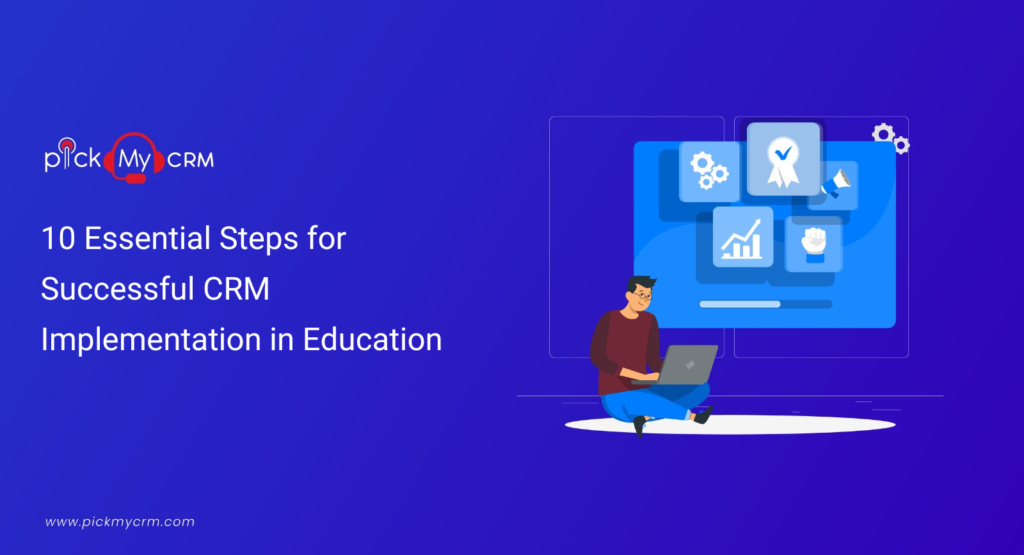On-Premise vs. Cloud-Based Solutions of Education CRM: Making the Right Choice
Why Choose On-Premise and Cloud-Based Solution of Education CRM in 2023?
In 2023, the choice between on-premise and cloud-based Education CRM solutions boils down to specific institutional needs and priorities. On-premise solutions shine in data control, making them a perfect match for institutions with rigorous security requirements and unique operational processes. Meanwhile, cloud-based solutions provide cost-efficiency, scalability, and accessibility, catering to institutions seeking flexibility and rapid implementation in a dynamic educational landscape.Where to Begin: On-Premise vs. Cloud-Based Solutions
Indeed, choosing between on-premise and cloud-based CRM solutions for your institution is a significant decision. Here's a concise overview of the considerations for both options,Advantages: On-premise solution of Education CRM
Here are the key pros of choosing an on-premise solution,- Data Control and Security: On-premise solutions grant institutions unparalleled control over their data and infrastructure. This control is essential for institutions with strict data security and compliance requirements, ensuring that sensitive information remains within the institution's environment.
- Customization: On-premise CRM solutions offer extensive customization options. Institutions can tailor the CRM system to align perfectly with their unique processes, workflows, and specific requirements. This Level of Customization can lead to a more seamless integration with existing systems and workflows.
- Data Sovereignty: In a global landscape with diverse data regulations, on-premise solutions empower institutions to uphold data sovereignty. It means that they have complete control over where their data is stored and how it's protected. This control ensures compliance with regional data regulations and provides peace of mind regarding data governance.
- Long-Term Cost Control: While on-premise solutions typically involve higher upfront costs, they can be cost-effective in the long term. Once the infrastructure is in place, ongoing costs are often lower than subscription-based models, making it a financially attractive option for institutions with a stable budget.
- Integration with Legacy Systems: Some educational institutions rely heavily on legacy systems. On-premise solutions can be seamlessly integrated with these systems, Ensuring a seamless transition and harmonious coexistence of the CRM with the existing technology stacks.
- Offline Access: In cases where internet connectivity is limited or unreliable, on-premise solutions can provide consistent access to the CRM system, allowing staff and faculty to work efficiently even in challenging connectivity scenarios.
Disadvantages: On-premise solution of Education CRM
While on-premise solutions for Education CRM offer benefits such as data control and Customization, they also come with certain Disadvantages that institutions should carefully consider,- Higher Initial Costs: On-premise solutions require a substantial upfront investment in hardware, software licenses, and IT personnel.
- Maintenance and Updates: Ongoing maintenance, updates, and patches are the institution's responsibility, which can be resource-intensive and costly.
- Limited Scalability: Scaling up an on-premise CRM can be complex and expensive, potentially hindering adaptability to growth.
- Dependency on IT Resources: Effective management of on-premise CRM systems relies heavily on proficient IT teams, which not all institutions may have.
- Delayed Implementation: The deployment of On-premise systems often demands additional time, potentially delaying the realization of CRM advantages.
- Complex Data Backups and Recovery: Managing data backups and disaster recovery procedures can be challenging, adding complexity to CRM management.
- Potential Downtime: On-premise solutions are susceptible to hardware failures and network disruptions, leading to system downtime.
Advantages: Cloud-Based Solutions of Education CRM
- Cost Efficiency: Cloud-based CRM solutions typically have lower upfront costs as they operate on a subscription-based model. It eliminates the need for significant investments in hardware and infrastructure, making them accessible to institutions with varying budgets.
- Scalability: Easily adapt to changing needs, accommodating more students or adding new features as required.
- Accessibility and Flexibility: Accessible from anywhere with an internet connection, promoting flexibility and collaboration.
- Reduced IT Burden: With cloud solutions, the responsibility for system maintenance, updates, and security rests with the service provider. It reduces the IT burden on educational institutions, allowing their IT teams to focus on strategic initiatives rather than routine maintenance tasks.
- Rapid Implementation: Cloud-based solutions frequently offer quicker deployment compared to on-premise systems. It means institutions can start realizing the benefits of their CRM sooner and respond swiftly to changing needs or market trends.
- Data Security Measures: Reputable cloud providers invest heavily in security measures, often exceeding the capabilities of many on-premise solutions. They employ advanced security protocols, data encryption, and rigorous compliance standards to safeguard sensitive student and institutional data.
- Automatic Updates: Cloud-based CRMs receive automatic updates, Ensuring that the System remains Secure and up-to-date with the latest features and improvements. It eliminates the need for manual updates and reduces the risk of system vulnerabilities.
- Disaster Recovery and Redundancy: Cloud providers Generally implement robust disaster recovery and redundancy measures. It guarantees regular data backup and swift recovery from unexpected incidents or Data loss.
Disadvantages: Cloud-Based Solutions of Education CRM
While cloud-based solutions for Education CRM offer numerous benefits, they also come with certain Disadvantages that institutions should consider when making their CRM decisions. Here are the disadvantages,- Ongoing Costs: Long-term subscription expenses may accumulate and surpass the upfront cost of on-premise solutions.
- Data Security Concerns: Storing sensitive student data off-site can raise security and compliance concerns, necessitating trust in the cloud provider's security measures.
- Limited Customization: Cloud-based CRMs may have customization limitations compared to on-premise solutions, potentially requiring institutions to adjust their processes.
- Dependence on Internet Connectivity: Cloud solutions rely on Internet access, which can be problematic in areas with unreliable or limited connectivity.
- Potential Downtime: Cloud-based solutions can experience downtime due to various factors, Impacting critical operations.
- Limited Control Over Updates: Automatic updates can disrupt workflows, and institutions have less control over update schedules.
- Data Portability: Migrating data between cloud providers can be challenging and costly.
- Vendor Lock-In: Institutions might develop a reliance on a particular cloud provider's ecosystem, which can constrain their flexibility.
- Resource Consumption: Cloud solutions can consume significant network resources, affecting overall performance.
- Privacy Concerns: Storing data can generate privacy concerns, Particularly when dealing with sensitive information like student records.
When to Consider On-Premise and Cloud-Based Solutions of Education CRM?
Consider on-premise solutions for Education CRM when your institution prioritizes Data control, Customization, and Long-term cost control. This choice is suitable when you have strict data security requirements, unique processes, and the resources for upfront investments. Opt for cloud-based solutions when your institution seeks cost-efficiency, scalability, accessibility, reduced IT burden, and rapid implementation. Cloud solutions are ideal for institutions facing budget constraints, fluctuating enrollments, and a need for remote access and flexibility in the dynamic educational landscape in 2023.How to Decide: On-Premise vs. Cloud-Based Solutions
Choosing the Right CRM for Education requires careful consideration of these factors,- Evaluate Your Budget: Determine your available budget and whether you prefer upfront costs (on-premise) or ongoing subscription expenses (cloud-based). Consider the financial feasibility of each option.
- Assess Data Security Requirements: Evaluate the importance of data security for your institution. If your institution has stringent data security and compliance requirements, on-premise solutions may be a better fit due to their level of control.
- Consider Customization Needs: Assess how crucial Customization is to your institution's specific processes. On-premise solutions provide customization options, allowing you to tailor the CRM system precisely to your requirements.
- Anticipate Scalability: Consider your institution's potential for growth and whether the CRM solution can scale in tandem. Cloud-based solutions are highly scalable, making them suitable for institutions with fluctuating enrollments.
- Evaluate IT Resources: Determine whether your institution has the in-house IT expertise to manage an on-premise solution effectively. Cloud-based solutions often reduce the IT burden, making them more accessible for institutions with limited IT resources.



